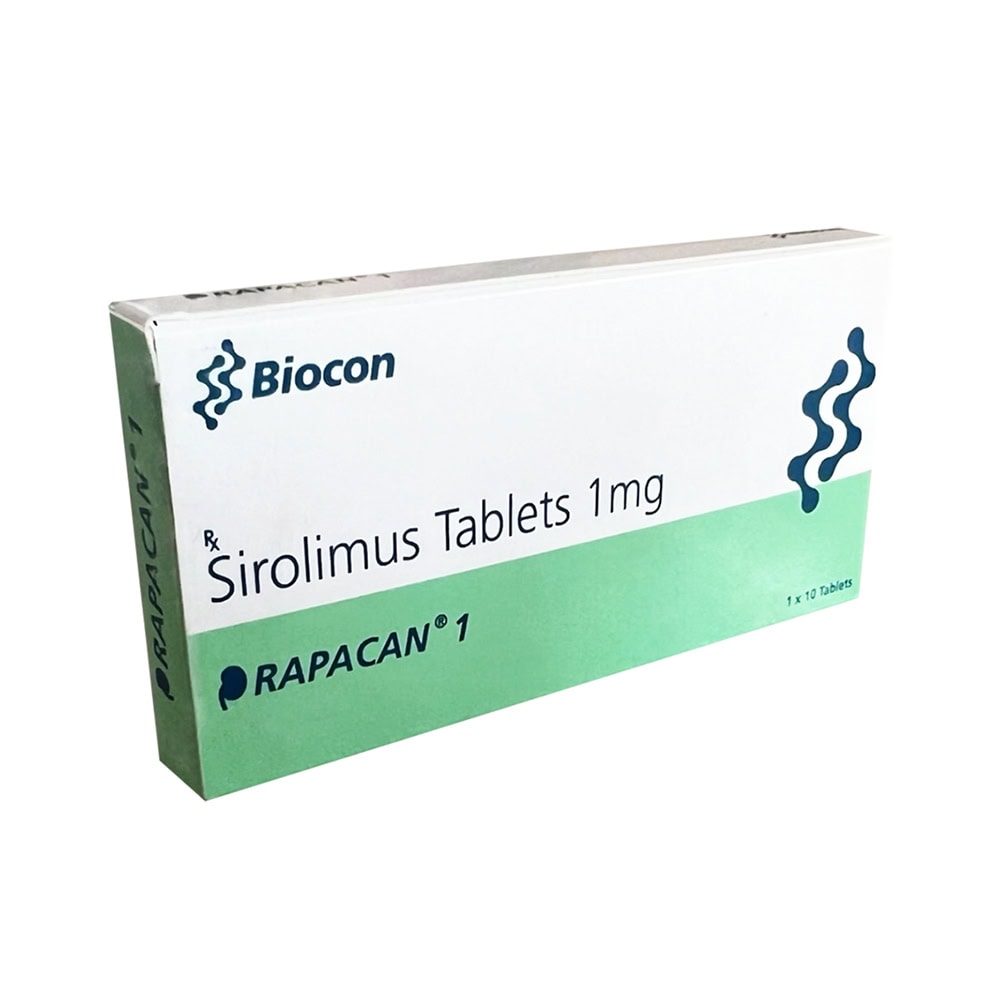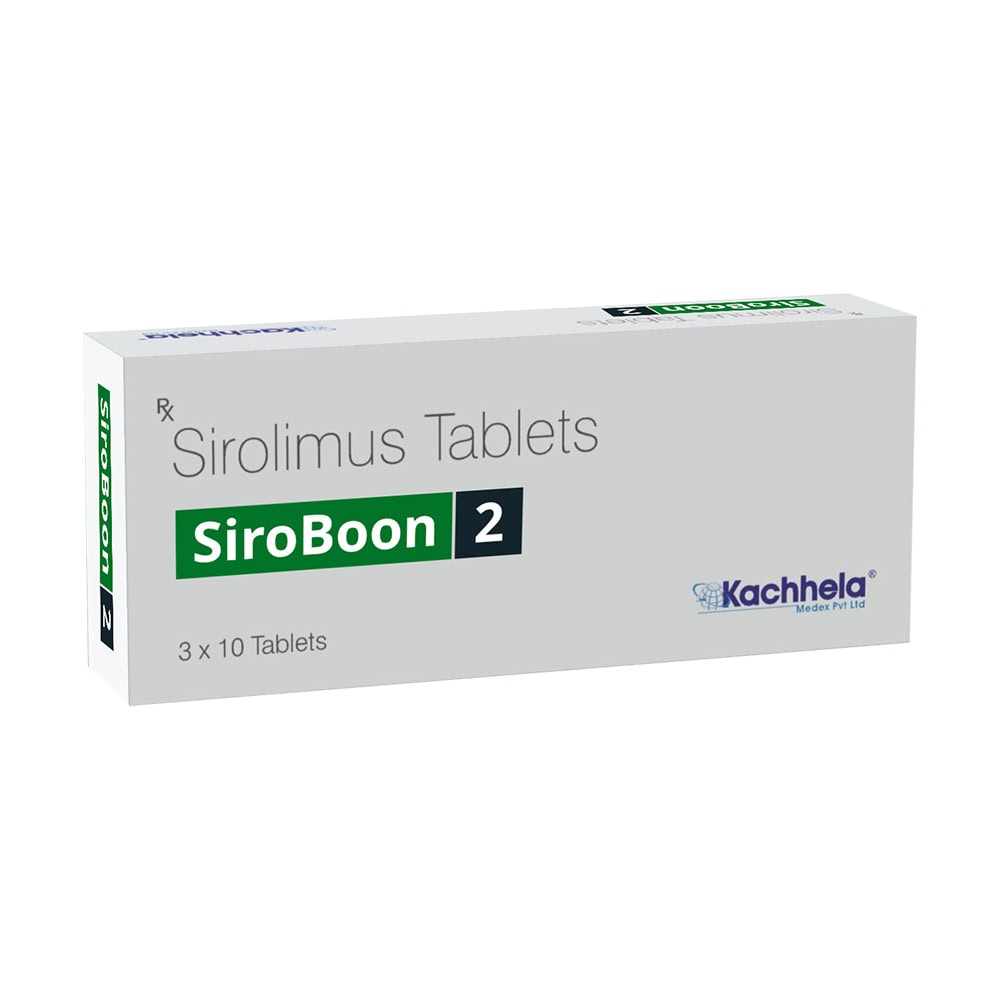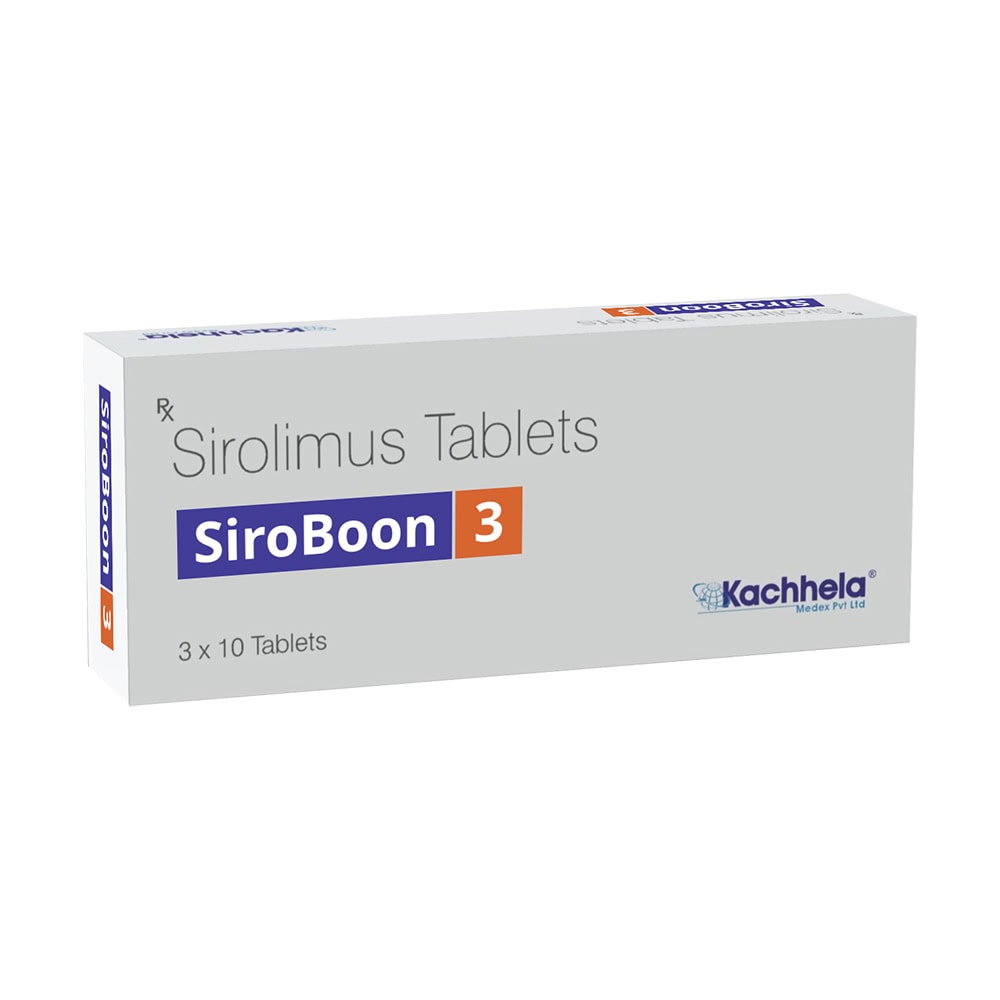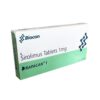Buy Afforable Rapamycin Online
Rapamycin stands as the foremost contender globally for a potent and accessible anti-aging product. No other product matches its potential. RapaShop stocks a wide range of Rapamycin and we ship them fast worldwide. 100% quality guarantee.
$89.95 – $214.95
$138.95 – $454.95
$148.95 – $569.95




Our Products
$89.95 – $214.95
$138.95 – $454.95
$148.95 – $569.95
10% off your first purchase at RapaShop!
Coupon code → 5TYUI90
Terms of use
*Coupon code can only be used once per person and limited to the first purchase.
*First time purchase only.
*If you order multiple items at once, the discount rate will be applied to each item.
*Cannot be used in conjunction with other coupon codes.
*Free 10-20 business days shipping
*Checkout with credit cards, PayPal or Crypto.
FAQs
How long does it take from ordering to delivery?
Shipping is free and delivery typically takes 10-20 business days. RapaShop has a 100% quality guarantee on all products.
What are the payment methods?
You can pay with credit cards, PayPal or Crypto.
What about the dosage?
We recommend starting at a small dose for the first week, then increase it gradually per week until you reached 6mg.
Why take Rapamycin for anti-aging?
Studies have shown that Rapamycin may increase both the health and lifespan.
Rapamycin is an FDA-approved drug that has been used for over 20 years by millions of (sick) people.
Rapamycin is now in ongoing, longterm testing in healthy monkeys and dogs with success already reported on safety and some age-reversal and functional improvement in organs.
No medications are specifically labeled to enhance longevity, including rapamycin.
Nonetheless, compelling research exists demonstrating rapamycin’s potential to improve both health and lifespan. It’s advisable to conduct thorough research on the topic.
Our sirolimus tablets are very pure.
We source our products extensively and only work with respectable suppliers.
Customer reviews
Why Take Rapamycin for Anti-Aging?

Rapamycin distinguishes itself as the unparalleled frontrunner among global contenders for a viable and widely available anti-aging product. Its unmatched potential makes it a prime consideration for those aiming for a longer and healthier existence. Engaging with healthcare professionals knowledgeable about Rapamycin or staying informed about ongoing studies is highly recommended for interested individuals.
Esteemed within the geroscience community, Rapamycin is hailed as the definitive benchmark in anti-aging pharmacology, and for compelling reasons. Its efficacy is well-documented, with animal studies consistently demonstrating superior lifespan extensions of about 15% to 30%—notably in mice. Its benefits span across a broad spectrum of species, underscoring its universal effectiveness in prolonging both healthspan and lifespan, a claim substantiated by numerous research teams globally.
Moreover, Rapamycin is approved for use in higher doses for cancer and transplant recipients, evidencing over two decades of application in millions of patients. Adding to its appeal, Rapamycin is remarkably cost-effective, making it an accessible option for those exploring ways to potentially slow or reverse the aging process.
Rapamycin is Safe
Rapamycin, an approved product, has been administered to millions of patients with various conditions for over two decades. Currently, it’s undergoing extended tests in healthy monkeys and dogs, with preliminary results already indicating its safety and potential benefits in reversing aging and enhancing organ function. These promising findings are documented in several studies, including two monkey studies (with 37 and 21 subjects respectively) and a dog study involving 35 subjects.
Its Effective
Rapamycin stands out as the most potent and consistently effective pharmacological method for directly influencing the aging process, offering a significant increase in both lifespan and healthspan in laboratory animals. It has consistently extended lifespans by approximately 15% to 30% across a variety of organisms tested, including yeast, worms, flies, and mice. Currently, it is being evaluated in ongoing tests involving marmoset monkeys and domestic dogs. The mTOR pathway, which Rapamycin modulates, is a critical nutrient signaling pathway preserved through a billion years of evolution and is now recognized as a key regulator of lifespan and aging processes. Rapamycin’s ability to effectively influence the mTOR pathway marks it as the first of its kind.
Furthermore, Rapamycin has been shown to positively affect the majority of aging’s hallmarks across major invertebrate model organisms and rodents. Notably, it increases the lifespan of various mouse strains by 10 to 30%, demonstrating effectiveness whether the treatment is started early or late in life and whether it is administered continuously, intermittently, or for short periods.
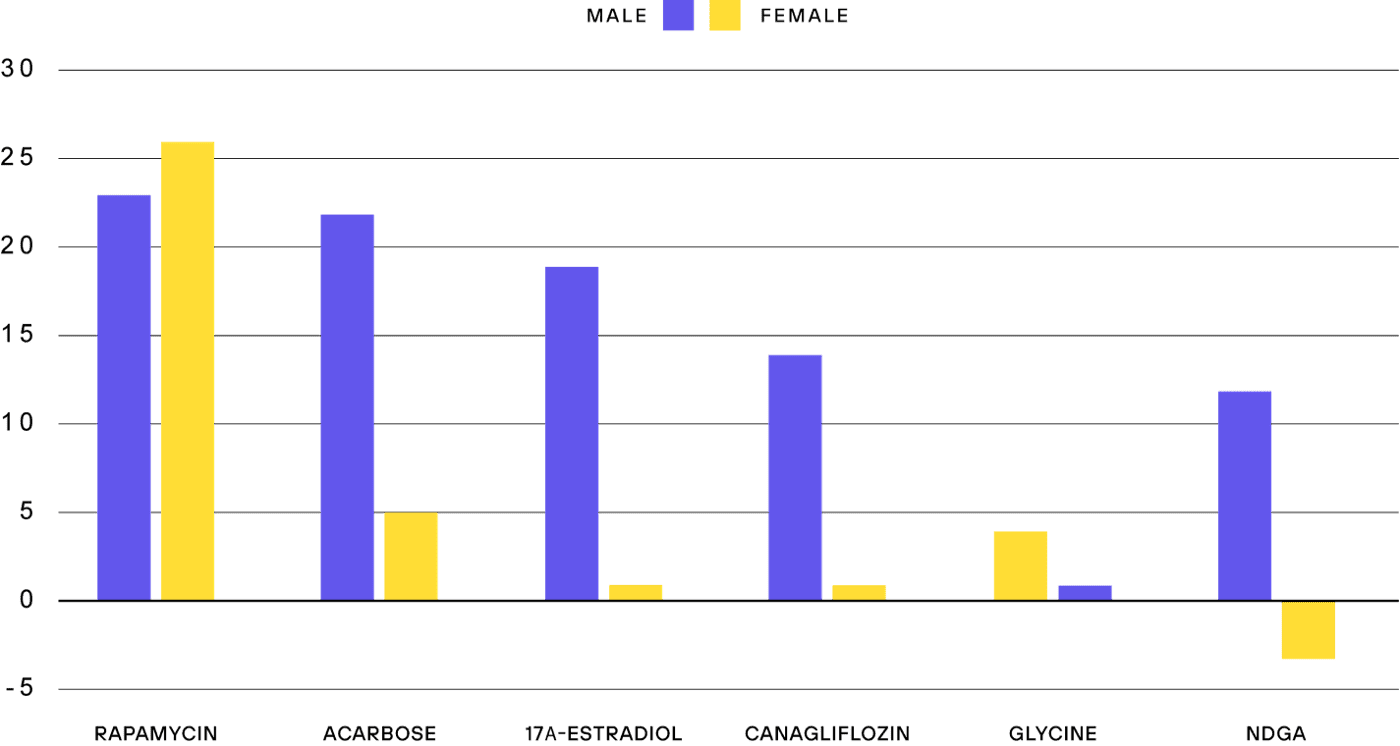
Rapamycin Lifespan Extension in Male & Female Mice: compared to the other leading lifespan improving products, as tested by the NIH National Institutes on Aging Interventions Testing Program.
Results have been validated and reproduced
Over the past two decades, the effectiveness of Rapamycin as an anti-aging agent has been confirmed repeatedly across numerous research laboratories worldwide. Its ability to extend lifespan and improve healthspan is not only highly reproducible in scientific terms but has also been substantiated by various prestigious institutions. Researchers at the University of Washington, Harvard University, the University of Wisconsin, and many others have conducted studies over the last 15 years, consistently demonstrating Rapamycin’s significant impact on aging. This widespread validation sets Rapamycin apart from some of the newer age-focused therapies. Its efficacy has been consistently endorsed by a broad spectrum of independent academic groups, underscoring its potential as a cornerstone in anti-aging research.
It works in early adulthood and middle age
Rapamycin stands out in the field of longevity research for its versatility and effectiveness across various life stages. Unlike many other products and therapeutic approaches, such as caloric restriction, which predominantly show longevity benefits when initiated from an early age, Rapamycin demonstrates a remarkable ability to extend lifespan when started either in early adulthood (around the mouse equivalent of a human’s 20s) or in mid-life (comparable to 60+ years in humans). This distinctive feature makes Rapamycin exceptionally practical and appealing for human application, as it offers the potential for lifespan extension regardless of when intervention begins post-early adulthood. Its unique capacity to be effective at various starting points in an organism’s life sets Rapamycin apart from other longevity-enhancing strategies, which are often deemed impractical for widespread use due to the necessity of early-life initiation.
In a groundbreaking 2016 study, an intensive 3-month high-dose treatment with Rapamycin significantly enhanced the remaining life expectancy of mice by up to 60% compared to untreated controls. Remarkably, the total lifespan extension observed in male mice from this short-term, high-dose regimen (14%) surpassed the benefits of a continuous low-dose treatment starting from early adulthood (10% in males) and approached the outcomes of a “moderate dose” regimen initiated in middle age (20% in males). This finding indicates that the longevity benefits of Rapamycin might be achieved without the necessity of lifelong administration.
Benefits of Rapamycin
Lifespan Extension
One of the most compelling benefits of Rapamycin is its ability to extend lifespan. Studies across a variety of organisms, from yeast to mice, have consistently demonstrated that Rapamycin can increase lifespan by a significant margin. Notably, research indicates that even short-term or intermittent treatment regimens can lead to substantial increases in life expectancy. This suggests that the mechanisms by which Rapamycin operates could offer insights into slowing down the aging process itself, rather than merely treating the symptoms of aging.
30+ More Healthy Years with Rapamycin?
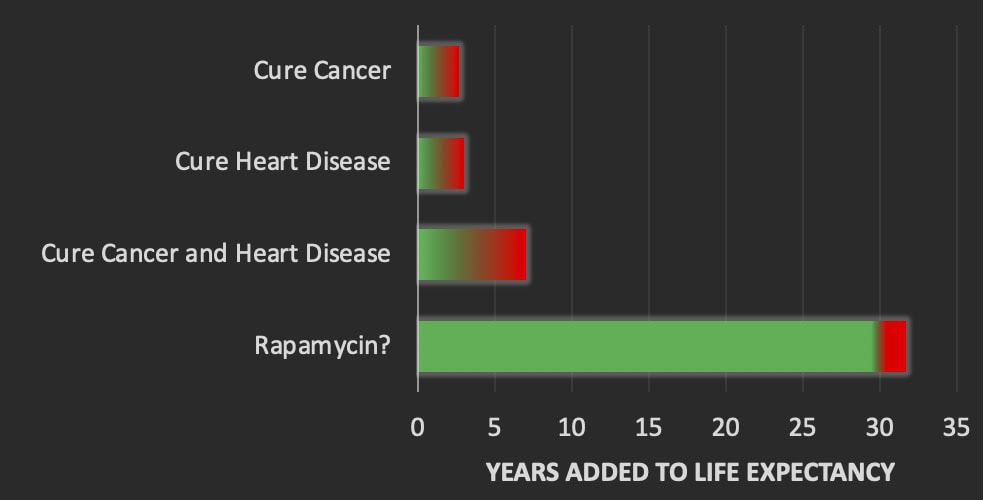
Matt Kaeberlein, a prominent figure in the field of aging research, has made significant strides in exploring the potential of rapamycin to extend life expectancy. His latest insights suggest an optimistic future for rapamycin’s application in anti-aging therapy, particularly after establishing optimized human dosing protocols through rigorous research.
Along with a recent discussion, this has inspired me to rethink my figure… pic.twitter.com/Jmr9dbE5Vl
— Matt Kaeberlein (@mkaeberlein) November 17, 2021
Matt Kaeberlein, a prominent figure in the field of aging research, has made significant strides in exploring the potential of rapamycin to extend life expectancy. His latest insights suggest an optimistic future for rapamycin’s application in anti-aging therapy, particularly after establishing optimized human dosing protocols through rigorous research.
In a recent study conducted by Kaeberlein’s lab, a notable experiment involving a high dose of rapamycin administered to mice in late middle age resulted in a remarkable 61% increase in remaining life expectancy. This groundbreaking result provides a tantalizing glimpse into rapamycin’s potential benefits for humans. If analogous outcomes could be achieved in humans, a 50-year-old individual with a typical remaining life expectancy of 30 years could anticipate an extension of approximately 18 years, based on the mouse model findings.
This projection is grounded in the dosing and interval studies conducted on mice, which have consistently showcased rapamycin’s efficacy in lifespan extension. The leap from mouse models to human application, however, necessitates a comprehensive and meticulous approach to studies focused on dosing and interval optimization. Kaeberlein suggests that with a dedicated and thorough exploration of these parameters in humans, the possibility of extending life expectancy by up to 30 years with rapamycin becomes increasingly plausible.
Such an advancement would represent a monumental shift in how society approaches aging and longevity, transitioning from merely managing age-related illnesses to fundamentally altering the human lifespan. It underscores the importance of ongoing and future studies aimed at unlocking rapamycin’s full potential in a manner that is both safe and effective for human use.
The implications of Kaeberlein’s research extend beyond individual health benefits, potentially affecting societal structures, healthcare systems, and ethical considerations surrounding aging. As research progresses, it will be crucial to navigate these implications thoughtfully, ensuring that advancements in longevity are accessible and beneficial across diverse populations.
For those interested in delving deeper into the specifics of Kaeberlein’s findings and the broader context of rapamycin’s role in aging research, consulting the research paper detailing the results of the latest mouse study offers valuable insights. Such studies not only contribute to the scientific community’s understanding of aging but also pave the way for translational efforts that could significantly impact human health and longevity.
61% effect * 30 years = 18 years. Not so far from 30 years when you consider that is not dose or duration optimized for rapamycin. I’d say it’s a pretty reasonable extrapolation that optimized rapamycin in middle-age could have that effect.
— Matt Kaeberlein (@mkaeberlein) November 17, 2021
Side Effects of Rapamycin
How Safe is Rapamycin?
rapamycin is approved in 1999 by FDA as SAFE. Since that time, it did not kill no one. It’s much much safer that aspirin. After all rapamycin increases health and lifespan in all animals
— Mikhail V. Blagosklonny, MD, PhD (@Blagosklonny) November 26, 2021
The topic of rapamycin’s safety is frequently discussed, largely because the majority of healthcare professionals familiar with the product have encountered it in the context of treating patients undergoing organ transplants or battling cancer. These patient groups often require high daily doses of rapamycin, combined with a regimen of other products, where the risk of adverse side effects can be significantly elevated. However, the use of rapamycin in the realm of anti-aging presents a markedly different approach, primarily characterized by a pulsed dosing protocol—where rapamycin is administered less frequently, such as once a week or even bi-weekly, diverging from the daily dosing seen in transplant and cancer treatments.
Several important aspects regarding the safety of rapamycin should be highlighted:
- Extensive Use: Rapamycin is an approved product that has been in use for approximately 20 years, benefiting hundreds of thousands, if not millions, of patients (based on estimates). This long-standing history underscores rapamycin’s established track record in proper settings, where it has demonstrated generally positive outcomes.
- Safety in Healthy Individuals: Notably, rapamycin has also been utilized in tests involving healthy subjects. Over nearly seven years of usage among thousands of healthy individuals, no serious adverse effects have been reported, according to a 2017 interview with Alan Green. This experience with healthy populations suggests a reassuring safety profile for rapamycin, particularly when used in a controlled, pulsed dosing manner distinct from its application in treating serious conditions.
- Rapamycin has been administered in extremely high single doses, as detailed in a few case studies where individuals attempted suicide by overdosing on 103mg of rapamycin. The outcomes of these incidents were surprisingly mild and did not result in long-term adverse effects. Consequently, the short-term risk associated with high-dose rapamycin appears to be exceptionally low.
These points underscore the importance of distinguishing between the high-dose, continuous application of rapamycin in patients with severe health conditions and the more measured, intermittent dosing strategies explored for anti-aging purposes. As interest in rapamycin’s potential to extend healthspan grows, understanding and communicating its safety profile in various contexts becomes increasingly crucial.
Five instances of acute overdose have been documented, involving three young children and two adults. Among these cases, four were accidental, while one was an attempt at suicide. Only two of the individuals experienced symptoms possibly linked to the overdose: a 2.5-year-old boy presented with a mild increase in alkaline phosphatase levels, fever, and gastroenteritis after consuming 3 mg, and an 18-year-old woman showed mild alterations in total cholesterol levels following the ingestion of 103 mg. Fortunately, none of the incidents resulted in life-threatening conditions. In one specific case involving the ingestion of 103 mg, serial blood concentration measurements initiated 24 hours post-ingestion demonstrated a pharmacokinetic profile similar to that observed within therapeutic dosing ranges.
These incidents indicate that, while acute overdoses predominantly occur by accident and seem to be generally well-tolerated, there is a potential higher risk for children to experience complications. This underscores the necessity for further research into the effects and management of overdoses.
